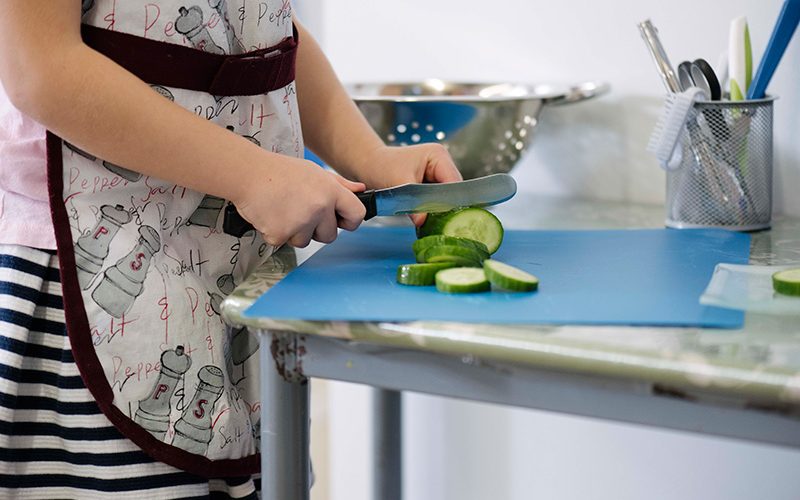Families new to Montessori education usually have plenty of questions, and we know having the right information is important to help you make the best decision for your child and family.
MIC provides a foundational education to support and guide your child’s growth. Thank you for considering our College for your child.
Children can become part of our community from the age of 3 where they will begin a magical, tailored journey through the world of Montessori.
Known as Cycle 1 in the Montessori world, learning in our Early Years area is centred on the unique needs of children between the ages of 3 and 6.
How is Montessori learning different from play-based programs?
Our teachers serve as Guides for the children’s explorations as they acquire skills, pursue interests, and develop their unique potential.
Early Years children move from being undisciplined to self-disciplined, from disorder to order, and from distracted to focused through work in the environment. The process occurs through repeated work that captures the child’s attention, imagination, and energy. They learn without even realising it.
Education for children here is self-paced and self-directed, Guided by trained Montessori professionals and supported by a prepared environment that encourages curiosity and engagement.
At MIC we have a significant focus on nature, outdoor play, and outdoor immersion, surrounded by our beautiful 22-hectare campus.
What to the children learn?
The 3 to 6-year-old child is undergoing a process we like to call ‘self-construction’. Using the Montessori philosophy and the specifically designed Montessori equipment supports each child’s ability to absorb knowledge and continue this path of building themselves.
There are four main areas in the Cycle 1 program:
Practical Life
Sensorial
Language
Mathematics
Considerable emphasis is also placed on Creative Arts, Music, Science, Geography and Cultural Studies.
The pre-primary environment brings the world to the child. Globes, maps, songs, land forms, collections of pictures of life in different cultures, and much more, are offered to help the child to grow as an individual, appreciating the larger context of his or her world.
Practical Life
The Practical Life component links the child’s home environment and the classroom. The child’s desire to seek order and independence finds expression through the use of a variety of materials and activities. These materials support the development of fine motor and other learning skills needed to move on to the more complex Montessori equipment.

The Practical Life materials involve the children in precise movements that challenge them to concentrate, work at their own pace uninterrupted, and complete a cycle of work – and this typically results in feelings of satisfaction and confidence. Practical Life encompasses four main areas: Control of Movement, Care of Person, Care of Environment, and Grace and Courtesy.
Sensorial
From an early age children are developing a sense of order and actively seek to sort, arrange, and classify their many experiences. The sensorial component provides a key to this world, a means for growth in perception and understanding. The sensorial materials help the child experience and perceive distinctions between similar and different things.
Later the child learns to grade a set of similar objects that differ in a regular and measurable way from most to least. Each piece of equipment is generally a set of objects that isolate a quality perceived through the senses: such as colour, form, dimension, texture, temperature, volume, pitch, weight, and taste.
Precise language such as loud/soft, long/short, rough/smooth, circle, square, cube, and so on is then attached to these sensorial experiences to make the world more meaningful to the child.
Language
Maria Montessori did not believe that reading, writing, spelling, and language should be taught as separate entities. Pre-primary children are immersed in the dynamics of their own language development and the Montessori approach provides a carefully thought-out program to facilitate this process. Oral language acquired since birth is further elaborated and refined through a variety of activities such as songs, games, poems, stories, and classified language cards.
Indirect preparation for writing begins with the Practical Life exercises and Sensorial training. Muscular movement and fine motor skills are developed along with the ability of the child to distinguish the sounds that make up language. With this spoken language foundation, the guide begins to present the symbols of the alphabet to the child.
Not only can children hear and see sounds but they can feel them by tracing the sandpaper letters. When sufficient letters have been learned the movable alphabet is introduced. These cardboard or wooden letters enable the child to reproduce his or her own words, then phrases, sentences, and finally stories.
Creativity is encouraged and the child grows in appreciation of the mystery and power of language. Other materials follow which present the intricacies of non-phonetic spelling and grammar. Because children know what they have written, they soon discover that they can read back their stories. Reading books both to themselves and others soon follows.
Mathematics
Mathematics is a way of looking at the world, a language for understanding and expressing measurable relationships. The child’s mind has already been awakened to mathematical ideas through the Sensorial experiences. They have seen the distinctions of distance, dimension, graduation, identity, similarity, and sequence and will now be introduced to the functions and operations of numbers. Geometry, algebra, and arithmetic are connected in the Montessori method as they are in life. For instance, the golden bead material highlights the numerical, geometrical, and dimensional relationships within the decimal system.
Through concrete material, the child learns to add, subtract, multiply, and divide and gradually comes to understand many abstract mathematical concepts with ease and joy.